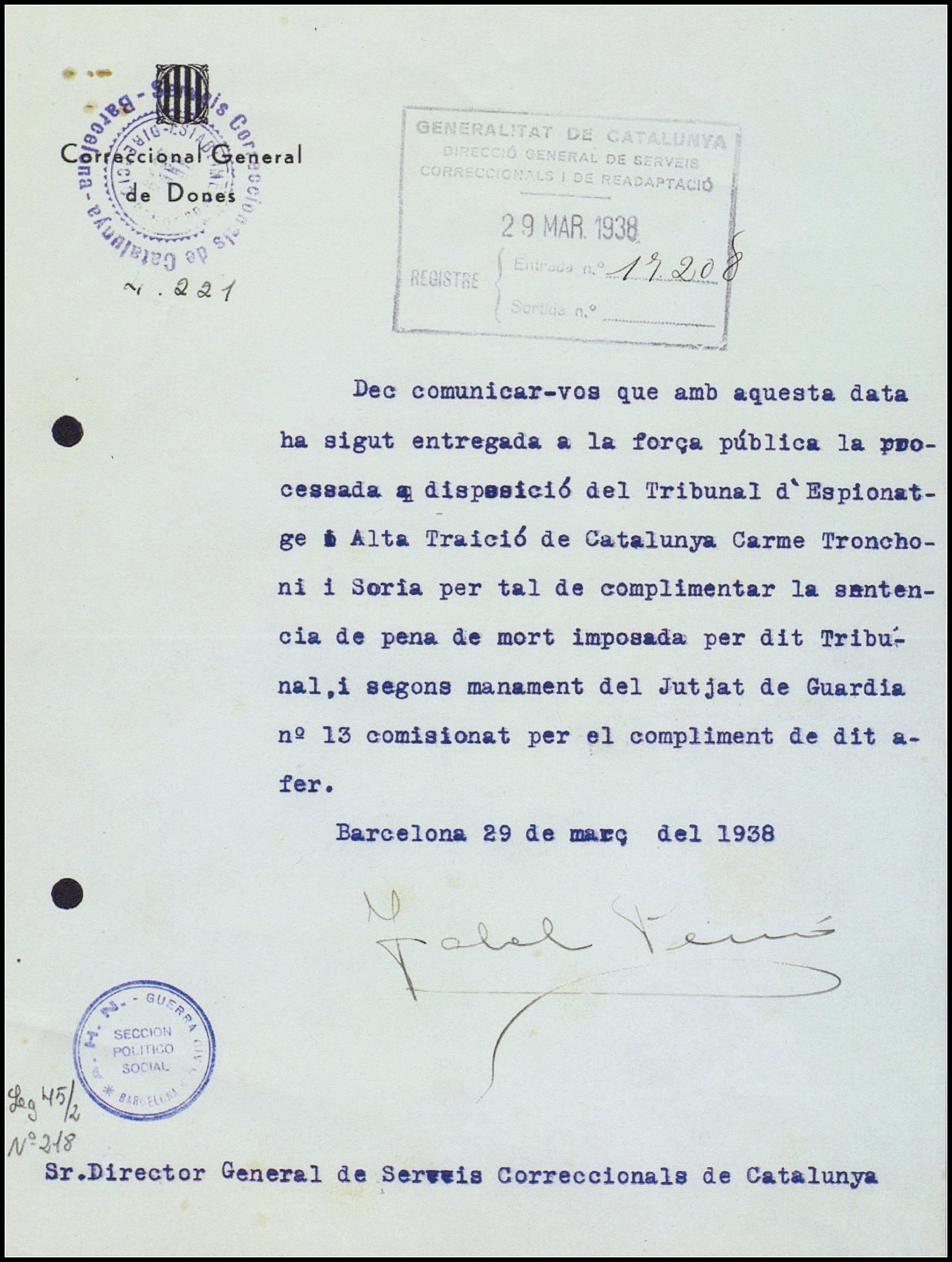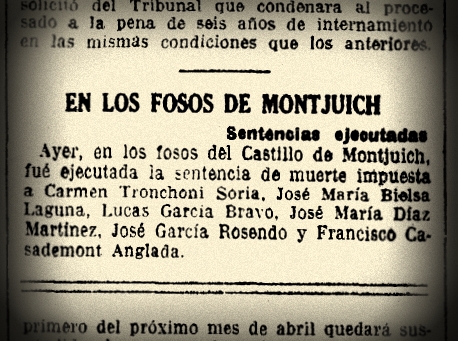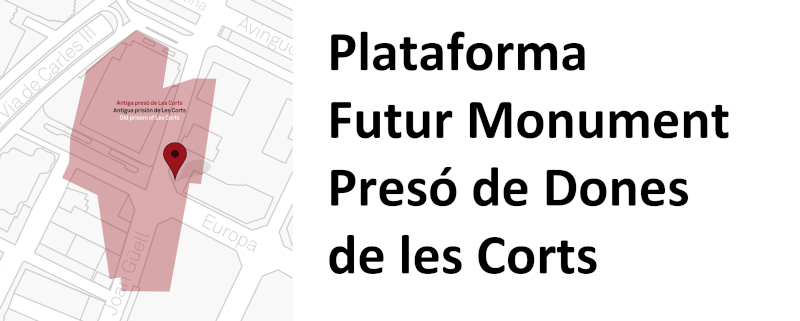A telephone operator, she was accused of planning the escape to Nationalist territory of two army officers and a young ‘falangista’ who had taken refuge at the Panama Consulate in Valencia. After her execution, Carmen would be remembered as a myth of Falange’s Sección Femenina y del Socorro Blanco (Female Section and White Relief), a civil organisation that helped those who had been targeted by the Republic authorities during the war.
Carmen had entered Les Corts on 3 December 1937, 5 days after her arrest in Barcelona following a set-up by SIM agents (Military Information Service) with the cooperation of the young informer Inés Jiménez Lumbreras, who would be executed as well in 1940.
On 15 February 1938 she was sentenced to death and was told on the 28th that her execution would take place the following day. That night she received the customary religious assistance by the priest Martín Torrent, and, in the early hours, she was taken to Montjuïc’s Castle barracks for her execution.
Those last moments of her life are thoroughly attested in her cartas de capilla (last letters of farewell) and the accounts of her fellow inmates.
Throughout the following months 7 other women were put to death. María Mira Calderón was executed by firing squad on 26 April and 6 more women shared her fate on 11 August: Lluïssa Gil Calvero; Rosa Fortuny Ramos; Joaquina Sot Delclós and her cousin Sara Jordà Guanter; Caterina Viader Fors; and Carme Vidal Rovira.
Les Corts reached its highest number in terms of occupation for the whole war period during that summer: 798 inmates (on 31 August) in a space with a capacity of 100 people. New women kept coming in by order of the Courts of Justice or the SIM itself: on the 15th of March alone 77 women got in.
In September 1938, due to overcrowding, the authorities transferred 106 prisoners to the Preventori of Sabadell (Sabadell Prevention Centre), an establishment that served as auxiliary prison.
Sources:
ARXIU NACIONAL DE CATALUNYA (ANC), Generalitat de Catalunya (Segona República), 1-1-T- 7260, 7262, 7263, 7015. (Documentación extraída del Archivo Histórico Nacional (AHN). Guerra Civil. Sección Político-Social. Barcelona).
AGULLÓ DÍAZ, M.C. (2004): “Entre la retòrica i la realitat: Juventudes de la Sección Femenina. València (1945-1975)". En Revista d’Història de l’Educació, nº 7, 2004, pp. 242-273 [2020.12.31]; MARTORELL TRONCHONI, D. (2008): “Carrers de Picassent amb nom propri: carrer de Carmen Tronchoni”, in Festes Majors, Ajuntament de Picassent, pp. 20-33: AVILÉS, G. (1939): Tribunales rojos (vistos por un abogado defensor). Barcelona; SÁNCHEZ BLANCO, L. (2016): Rosas y Margaritas. Mujeres falangistas, tradicionalistas y de Acción católica asesinadas en la Guerra Civil. Madrid; La Vanguardia, 30-3-1938, p. 2.
















